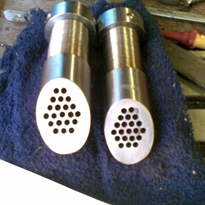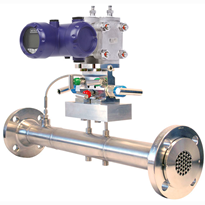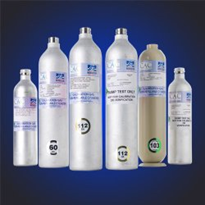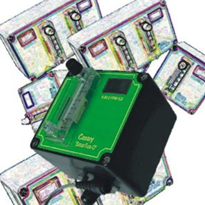Driven by increasingly stringent environmental regulations, the Australian oil and gas industry is constantly looking for better ways to monitor and reduce greenhouse gas leaks. While there are many technologies capable of finding fugitive gas emissions, optical gas imaging might be the most useful technology to help them reach that goal.
In March 2019, the Australian government announced a range of measures to improve and increase transparency of the country’s offshore oil and gas activities. The government decided that all plans will be published, and draft environment plans for offshore seismic and exploration drilling activities will be open for public comment under changes to environmental regulations.
“Australians need to be confident that oil and gas activities being carried out offshore meet our stringent environment regulations, and that all environmental risks and impacts of the proposed activity are taken into account,” said Minister for Resources and Northern Australia, Matt Canavan.
There are numerous offshore oil and gas operations off Australia’s west coast. In terms of production of natural gas, Australia is the largest producer in the Asia-Pacific region and one of the most prolific in the world. The country is currently the fifth largest Liquid Natural Gas (LNG) exporter in the world, with Japan as the primary importer.
Reducing gas leaks
The recent transparency announcement by the Australian government shows the country’s commitment to high environmental standards and to minimizing environmental impacts in the Australian oil and gas industry. It is a highly regulated industry that operates under strict guidelines and is answerable to several federal and state government agencies.
But the reality proves that these regulations are necessary. Gas is mainly methane, which is 80 times more potent in the atmosphere than carbon dioxide over a 20-year time horizon. Unfortunately, the oil and gas sector is generally considered to be the largest man-made emitter of methane – second to agriculture.
There are potentially thousands of points in an oil and gas field or plant where emissions can occur. This knowledge has made the reduction of upstream emissions one of the key policy priorities in the energy sector. Companies producing, processing and transporting gas want to ensure that gas leaks are kept to a minimum.
Detecting leaks efficiently
Gases can emit at different points in the chain, from oil and gas production to gas processing and pipeline transportation. Some emissions are leaks, while some are a result of typical equipment operation. While there are many technologies capable of finding fugitive gas emissions, optical gas imaging (OGI) is the only tool that can visualize gas and lead inspectors immediately to the source of the leak.
The use of gas detection cameras is therefore gaining more and more acceptance as a suitable method for leak reduction among nations worldwide that are committed to reducing methane emissions.
The key here is efficiency. Studies that have been done in the sector show wide variations in terms of emissions across regions and even within the same company. A small share of a company’s facilities can account for a large share of total emissions. Even within those facilities, a small share of sources can account for the bulk of the problem. The difficulty then is finding the right facilities and the right sources at those facilities.
With an optical gas imaging camera, surveys can be done much more systematically. As part of the preventive maintenance process, they can be used to detect leaks in piping, flanges, and connections in offshore operations. The optical gas imaging camera can rapidly scan large areas and pinpoint leaks in real time.
Core emission sources
As part of their efforts to reduce methane emissions from upstream oil and gas operations, members of the international organization CCAC[1] Oil and Gas Methane Partnership (OGMP) identified nine core emission sources that account for a large portion of methane emissions in a typical upstream oil and gas operation.
- Natural Gas-Driven Pneumatic Controllers and Pumps
- Fugitive Component and Equipment Leaks
- Centrifugal Compressors with “Wet” (Oil) Seals
- Reciprocating Compressors Rod Seal/Packing Vents
- Glycol Dehydrators
- Unstabilized Hydrocarbon Liquid Storage Tanks
- Well Venting for Liquids Unloading
- Well Venting/Flaring During Well Completion for Hydraulically Fractured Gas
- Casinghead Gas Venting
Optical gas imaging cameras can help companies survey for these nine leak sources efficiently and report on the results. Some companies feel that they have the problem under control but they're looking for a way to demonstrate this to their stakeholders in a credible manner. Optical gas imaging cameras help them to do that.
FLIR OGI cameras for offshore leak detection
The use of optical gas imaging cameras like FLIR’s GFx320 has already become a standard practice in many oil and gas companies. The cameras offer a proactive way to identify sources of fugitive emissions and repair leaking components before it is too late. Efficiency, productivity and safety are some of the most important reasons why oil and gas companies choose optical gas imaging.
- Scanning efficiently: Experience shows that up to 84 percent of leaks occur in less than one percent of the plant. This means that 99 percent of inspection time is used to scan safe, leak-free components. OGI provides a complete picture – allowing operators to skip close examinations of areas that do not need any action.
- To increase efficiency of operation even more, surveyors can make use of additional equipment that is coupled to the OGI camera, such as FLIR’s QL320 quantitative OGI system. Inspectors can use the QL320 to measure the leak rates for methane and other hydrocarbons, eliminating the need for secondary sampling with a toxic vapor analyzer or similar tool. Unlike these traditional measurement systems, the QL320 does not require close contact with the gas in order to measure emission rates, making it a safer solution for quantifying gas leaks.
- Maintaining operations: OGI is a non-contact method that can be performed during normal operations – meaning you can survey more often, and identify leaks earlier.
- Working safely: Optical gas imaging can detect small leaks from several meters away and big leaks from hundreds of meters away, allowing inspectors to work at a safe distance.
- At offshore rigs, well sites, and production plants, there’s often a risk of gas collecting and igniting with a stray spark or hot surface. With the FLIR GFx320 OGI camera, users can work confidently and focus on the job at hand. The GFx320 is certified for use in hazardous locations, improving worker safety and potentially reducing pre-survey paperwork (depending on company protocols).
- Avoiding fines: Fugitive gas emissions also lead to billions of dollars in regulatory fines and damages. By catching leaks early and making repairs quickly, companies can avoid fines and retain gases they could sell for profit.
With increasing natural gas regulation globally, oil and gas producers are looking for ways to quickly detect fugitive emissions and to stop those leaks before they grow into huge fines.
Thanks to optical gas imaging cameras like the FLIR GFx320, inspectors can work in confidence, fix leaks quickly, and protect the environment while avoiding product losses. In addition, optical gas imaging cameras can help assure stakeholders that a company is doing its utmost to keep emissions under control.
[1] The Climate and Clean Air Coalition (CCAC) is a voluntary partnership of governments, intergovernmental organizations, businesses, scientific institutions and civil society organizations, committed to protecting the climate and improving air quality. The CCAC created a voluntary initiative to help companies reduce methane emissions in the oil and gas sector. The Oil & Gas Methane Partnership (OGMP) was launched at the UN Secretary General’s Climate Summit in New York in September 2014.










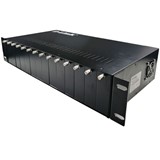



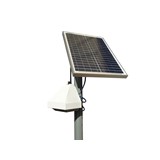

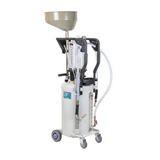





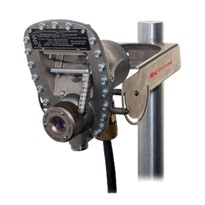
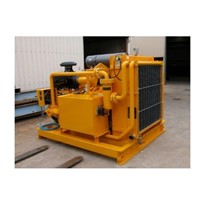
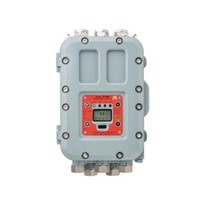
-205x205.jpg)

